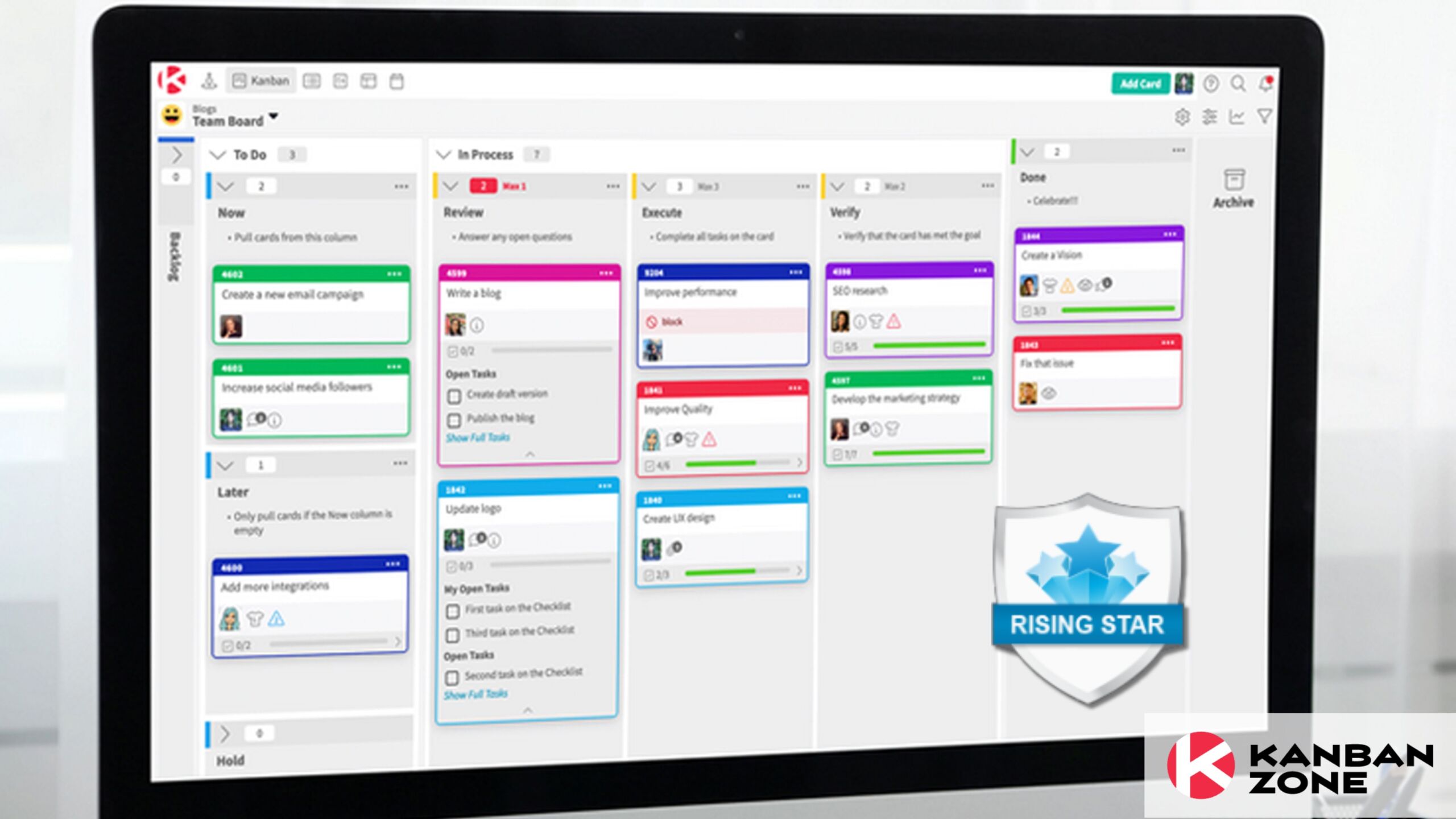
We already know that from proper implementation and use of Kanban come many benefits. The main one being continuous improvement. Using Kanban helps teams work faster and more efficiently. But more importantly, Kanban is the perfect tool for identifying hidden problems. And engaging people in resolving them by continuously trying new, innovative ways to create more value. Making kaizen the way of thinking behind the Kanban methodology and powering its core principles and practices.
What is Kaizen?
Kaizen is a Japanese philosophy. The work kaizen (改善) literally translates as “the act of making bad points better”. The more popular translation is “change for better”. Or simply put, improvement. It is a philosophy created around the concept that we should strive for progress. Аnd implementing small changes in our daily activities to continuously improve the way we do things.
The modern sense of kaizen originated in the Toyota factories. As part of the Toyota Production System (TPS). For Toyota, using kaizen means continuous improvement. As a result, kaizen has become part of the core practices of Lean manufacturing, and later in Lean management.
Kaizen, however, is not necessarily a business philosophy. Kaizen’s founding principle is that everything can and should be constantly improved. Which makes kaizen easily applicable to any area in life and any industry.
Kanban without Kaizen is Pointless
As we mentioned before, one of the main goals when using Kanban is to introduce continuous incremental improvements. But here’s a very interesting thought from Taiichi Ono: “where there is no standard, there can be no kaizen”.
Let’s go back to the initial Kanban method implementation, and the Kanban practices. More specifically, Visualize the workflow and Make process policies explicit.
Visualize the workflow means that the team needs to depict and describe its process or flow of value. This is done using the Kanban and Kanban cards. The Kanban board, separated in columns visualizes the flow and all its stages. The Kanban cards represent the tasks. The cards movement through the columns shows the movement of value through the organization. The board has a dual purpose here. The obvious one, tracking and monitoring the project’s progress. And the second, identifying bottlenecks and areas for improvement. Giving us the kaizen connection.
If we go back Mr. Taiichi’s statement, we know that in order to improve something, we must have a standard for the work we deliver. This standard is comprised of all process policies. Which takes us to the other practice we mentioned earlier – Make process policies explicit. Including all processes, steps, tools, configuration, references, rules and guidelines regarding tasks and activities for each process segment. And making them integrated into the Kanban system. This way everyone involved will be aware of the standards and follow them. Which gives us the starting point and the common reference that can serve as the basis for future improvement and comparison point.
When a bottleneck is identified, it results in making changes and improvements to the process. If these changes prove to be successful, the team implements them. And they become the new standard of work. So they have to be visualized on the board in order for the whole team to be aware of the changes.

Benefits of Kaizen in Kanban
Even though the most obvious benefit is making improvements to the process and working more efficiently, the kaizen philosophy brings much more to the whole organization. When kaizen grows into the corporate culture, people start perceiving it as a way of thinking, a way of life. When that happens, kaizen will improve the company’s process and also contribute to the personal improvement of individuals.
Some of the most significant benefits of Kaizen include:
Increased motivation
Teams that actively use kaizen in Kanban are more motivated to engage more actively in the work and improve when they understand their importance in the team. Seeing their small ideas incorporated in a process of continuous improvement that benefits everyone, they are encouraged to stay engaged and contribute more.
Growth mindset
When Kanban and kaizen become part of corporate culture, and employees understand and accept that, the business will be successful. Understanding the big picture and sharing the same mindset and approach towards work and development inspires team members to grow together with their company.
Acceptance of new ideas
The organization that strives to improve its process, is an organization that is more accepting of new ideas. Of course, not all ideas will be good and successful. But everyone will be encouraged to think outside the box and share their problems and solutions. A strategy of continuous improvement helps teams get used to change. And accept that it leads to progress.
Improved communication
Implementing small, continual changes and standardization is easier than making major abrupt changes. In Kanban, all team members are part of the creation and implementation of the changes. And when the team does this together, they communicate more openly because it helps them do what’s best for everyone.

Last Words
The kaizen philosophy is a way of thinking. And there are many tools and methods that support its implementation in life and in business. One such methodology is Kanban. So when a business implements Kanban, it also employs the kaizen principle of continuous improvement.
The Kanban methodology helps organizations find their path to improvement. And over time, identify bottlenecks that hinder their progress and decrease productivity. Then, find suitable solutions and improve their process by making small, continual changes.
Kaizen is the secret ingredient in the recipe of being and staying a lean organization. And the same way there is no lean without Kanban, there can be no Kanban without kaizen.
Learn to Work Smarter, Not Harder!
Get our top articles weekly.
Table Of Contents
Discover many more posts…







